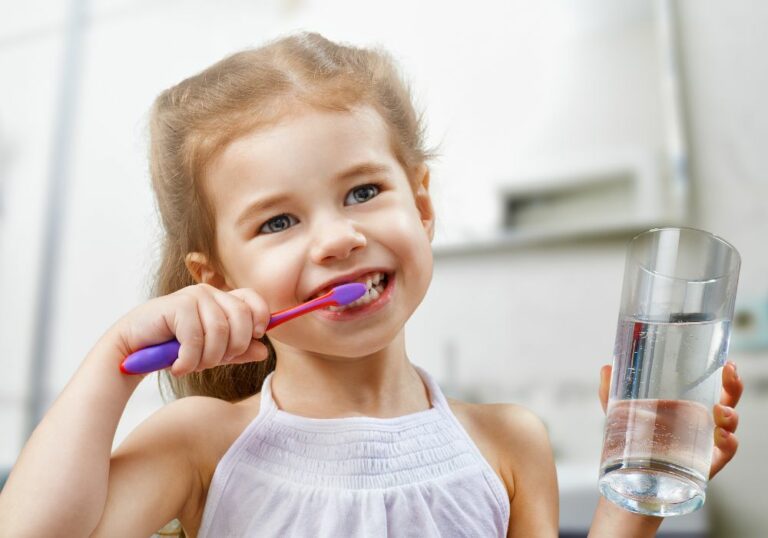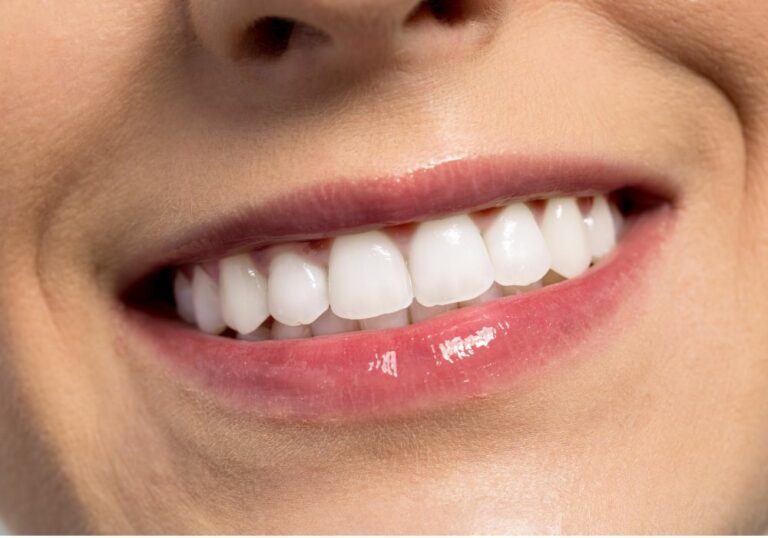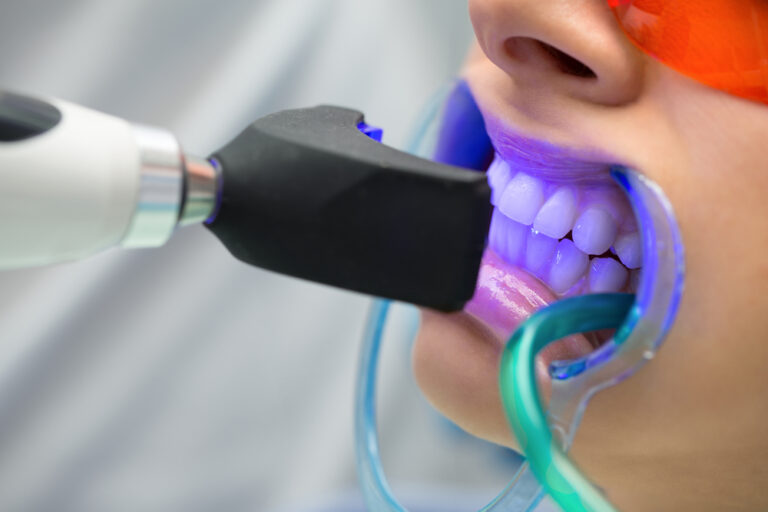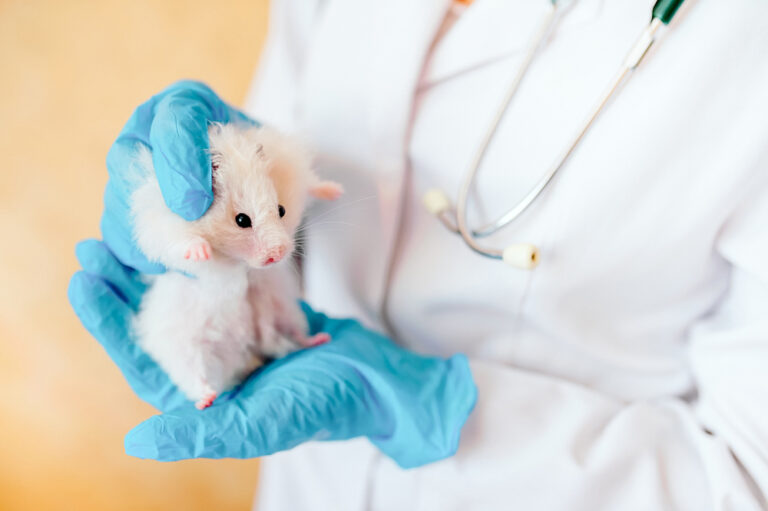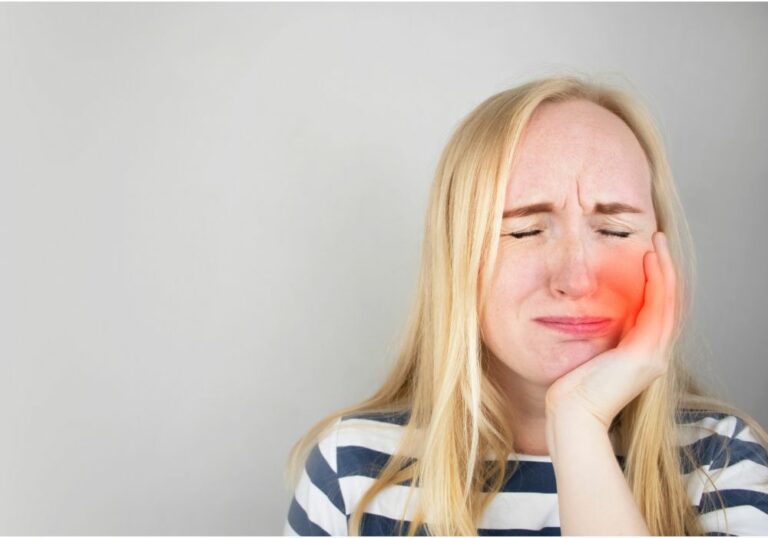If you’ve ever seen your cat yawn and caught sight of the tiny set of teeth lining up its mouth and wondered how many teeth cats have to figure out how best to take care of them, read on to get answers to your questions.
The number of teeth a cat has differs from humans and other common pet animals like dogs. For instance, an adult cat usually has 30 teeth, while a baby cat, also known as a kitten, has 26 tiny teeth. Notwithstanding these differences, cats share a similarity with humans, as they also produce two sets of teeth in their lifetime: deciduous or milk teeth and permanent or adult teeth.
Understanding how many teeth cats have, especially if you own one, is a starting point to ensuring you provide your cat with the best oral health. For this reason, we’ve packed lots of helpful information regarding the types of teeth you’d find in your cat’s mouth and how to maintain them properly.
How Many Teeth Should a Cat Have?
To properly answer this question, you need to understand that just like humans, cats grow two sets of teeth in their lifetime.
Hence, depending on whether the cat is a kitten or an adult cat the number of teeth will vary.
How Many Teeth Should a Kitten Have?
Typically, cats are born without teeth. However, their deciduous teeth start growing when they’re around 2–6 weeks old. Usually, the incisors at the front of the cat’s mouth appear first within the third and fourth weeks, while the last of the baby teeth, the premolars, come weeks after.
A baby cat with a complete set of milk teeth should have 26 teeth comprising incisors, canines, and premolars. Interestingly, these milk teeth only last a few weeks before falling off. Keep in mind that you may not witness your cat’s teeth falling out, and that’s normal because they’re more likely to swallow them than spit them out.
How Many Teeth Should an Adult Cat Have?
Although milk teeth start to fall off at around 11 weeks, cats do not begin growing permanent teeth until they’re about 16 weeks old and continue until they clock seven months.
Much like humans, an additional type of teeth called the molars appear last, causing an increase in the number of teeth an adult cat has. This means that while a baby cat has 26 teeth, an adult cat has 30 teeth consisting of incisors, canines, premolars, and molars.
Types of Cat’s Teeth According to Function
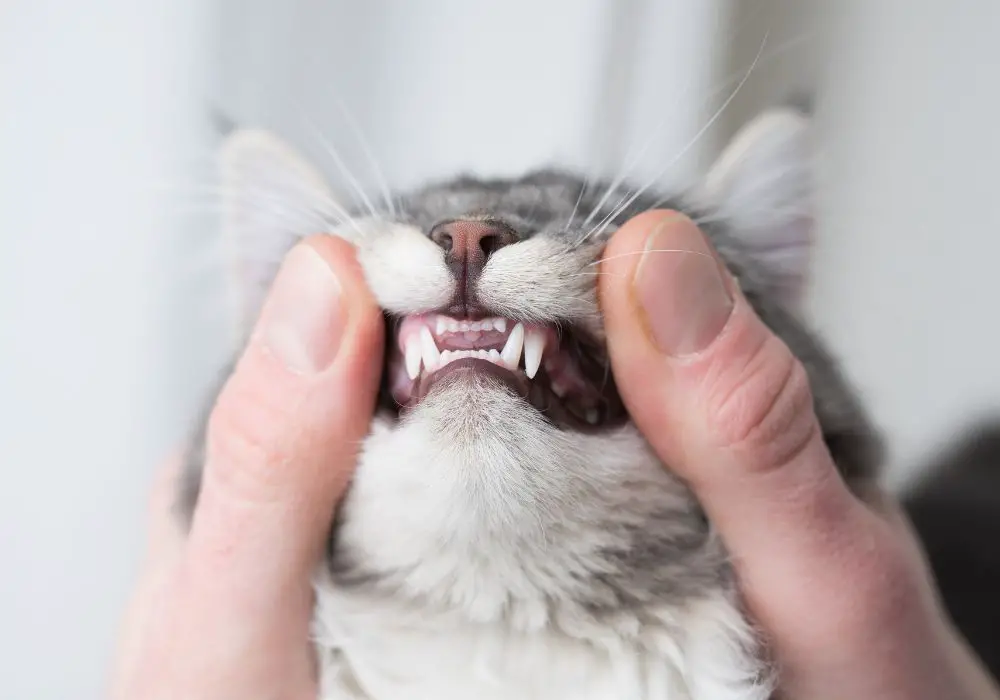
Now that we’ve successfully opened your eyes to the types of teeth owned by cats. Adult cats have four types of teeth, just like humans. These different teeth have unique structures and functions during feeding.
However, the difference is that cats are carnivorous animals, so their teeth types are shaped quite differently than humans. Since they need their teeth to tear into flesh, they don’t have many with flat surface teeth suitable for grinding food.
Let’s discuss these different teeth types.
1. Incisors
Looking at a cat’s teeth, you notice some tiny, closely arranged teeth in front of its mouth. These 12 teeth, with six on top and six at the bottom, are called the incisors. The incisors come in handy when cutting food into bits before chewing. Also, cats use them to bite on their toys or when playing with you to not cause any injury.
2. Canines
Right next to the incisors on each side are the canines. These are long, sharp, and pointy teeth, much like typical fangs. There are four canine teeth, two on top and two at the bottom. Their slightly curved structure and strength make them useful for grasping and piercing flesh. Cats will use these teeth to attack prey and defend themselves.
3. Premolars
A cat’s premolars are wide teeth positioned on either side of its jaw behind the canines. They are 10 in total and are the only ones with unequal numbers on the upper and lower jaws. This means that while there are six premolars on top, only four appear at the bottom. Your cat will use these teeth to bite and hold down prey, cut food into bits, and chew on kibble.
4. Molars
Similar to humans, only adult cats have molars. These are wide teeth, much like the premolars located at the back of your cat’s mouth. However, the difference is they’re stronger and are used for grinding harder substances like bone.
There are four molars, with two on the upper jaw and two on the lower jaw. Typically, your cat will use its molars to crush food into the paste before swallowing.
Why is My Cat Losing its Teeth?
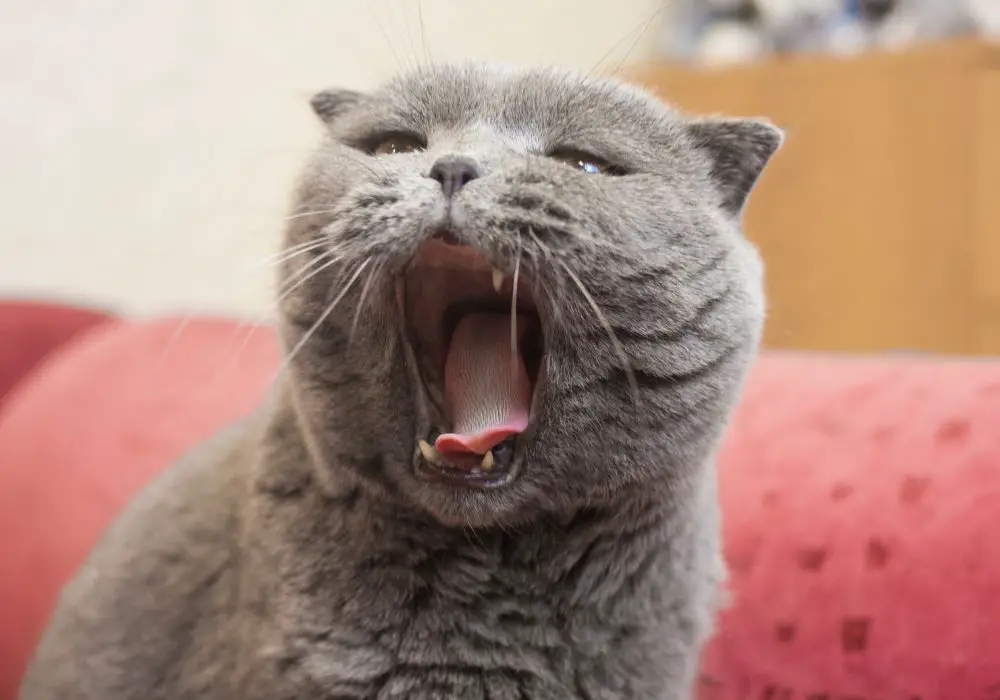
Your cat’s permanent teeth are meant to last their lifetime; however, certain factors and conditions can cause them to fall off unexpectedly, resulting in eating difficulties and other dental issues. Let’s look closely at some common causes of tooth loss.
1. Tooth Resorption
Tooth resorption is the most common cause of tooth loss in cats, and the reason for it is still not clear. Simply put, the body breaks down and absorbs the structures forming the tooth. This dental disease first affects the enamel close to the gum line before spreading to the tooth’s root. It also causes resorptive lesions and will require immediate treatment once noticed.
Although some suggest otherwise, the best treatment for tooth resorption is the removal of the affected teeth. This is because there’s a likelihood the disease will spread to other teeth if still intact, even while carrying out treatment.
2. Gingivitis
When bacteria accumulates on your cat’s gums, it results in painful inflammation, which, if left untreated, causes tooth loss. Gingivitis is usually a result of poor dental hygiene, but other underlying diseases can trigger it. It’ll be best to be certain that your kitty has no other health issues before treating it like a dental problem.
To properly treat gingivitis, you’ll need to take your cat to a vet, who’ll likely carry out a dental cleaning and prescribe antibiotics to get rid of the accumulated bacteria. Sometimes, the tooth near the inflamed area may be extracted to prevent further complications.
3. Periodontitis
When gingivitis is ignored or not properly treated, it progresses into what is called periodontitis. This disease affects the connective tissues holding your cat’s teeth in place such that they no longer do so effectively, leading to multiple loose teeth.
Adversely, your cat’s periodontitis may be so severe that thorough teeth cleaning won’t be a suitable remedy. In such cases, multiple tooth extractions will be done to properly manage the condition.
4. Trauma
Tooth loss can occur when there’s a forceful impact on your cat’s face or jaw. This kind of trauma can happen during an accident or a fight with another animal. Tooth loss from trauma can cause a lot of pain for your cat, so it’s best to take them to the vet once you notice it.
There’s no standard treatment for tooth loss from trauma, as the severity determines the procedure the vet recommends. However, any treatment carried out will only help alleviate the pain and prevent infection.
Aside from losing a tooth, your cat can get a broken tooth from trauma or attempting to chew something hard. Luckily, unlike a lost tooth that can’t be replaced, a vet can salvage a broken one by doing a root canal treatment.
Ways to Keep Your Cat’s Tooth Healthy
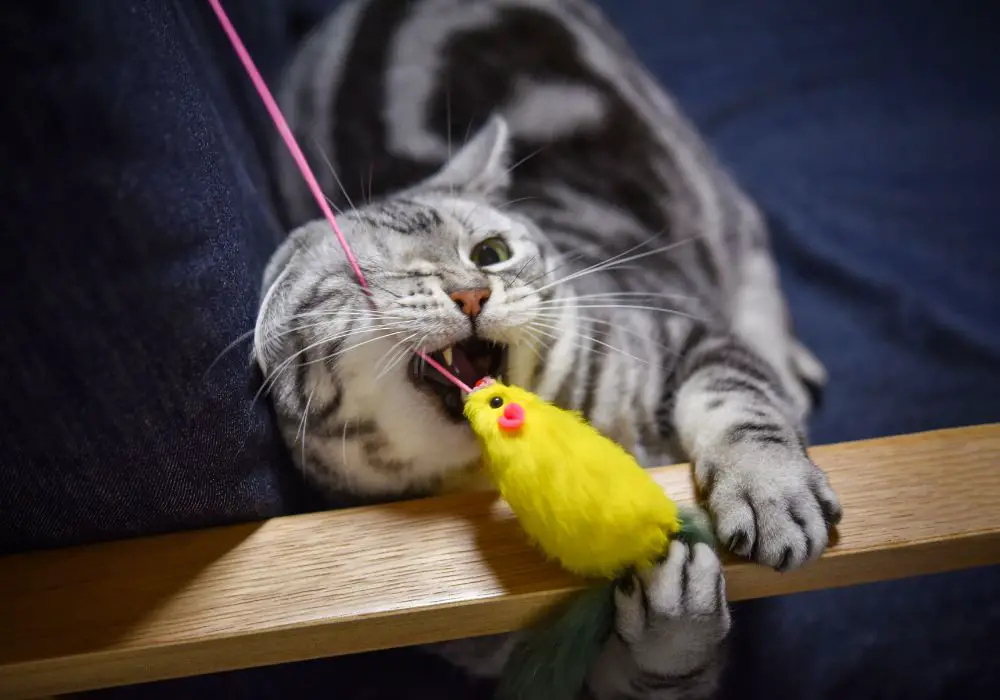
Your cat’s dental hygiene is very important because its life expectancy can drop drastically if it is ridden with periodontal disease. That said, you should pay attention to its dental care and schedule visits to the vet if you notice something off with its teeth. Here are some ways to keep your cat’s teeth healthy:
1. Brush Your Cat’s Teeth
One of the best ways to ensure your cat’s teeth are healthy is by maintaining a regular brushing routine. You may feel a bit apprehensive, especially because cats have sharp teeth that can cause injuries. However, there’s no need to worry.
Brushing your cat’s teeth is a relatively easy task to carry out. In fact, you may find yourself enjoying it in no time. All you need to do is find out what works best for you and your cat through practice and using relevant guides.
2. Give Your Cat Dental Treats
Dental treats are edibles given to cats to help boost their dental health. Essentially, these treats have abrasive surfaces that, when put into your cat’s mouth, make contact with its teeth almost like a brush would and eliminate bacteria in the process.
While dental treats for cats are less effective than brushing, they’re still very beneficial. First, they help stimulate saliva production, which plays a crucial role in eliminating bacteria. Additionally, these treats often contain ingredients like enzymes and herbs that promote your cat’s oral hygiene, freshen its breath, and reduce dental plaque formation.
However, remember that while dental treats are quite helpful in maintaining your cat’s good dental health, they can never be as effective as brushing and, therefore, should not be used as a substitute.
3. Take Your Cat For Regular Check-Ups
It would help to take your cat to a veterinary dentist at least once a year. This is because even if you have a good dental care routine for your cat and constantly monitor its teeth, some things may still go unnoticed. Going to a vet for a proper assessment will help spot early signs of dental issues and reduce the likelihood of them becoming more severe.
Conclusion
Now that you know the number of teeth cats have and how to take proper care of them, you can now assist your feline friends in maintaining good dental hygiene. In return, you’ll witness their gratitude through an adorable yawn that showcases their healthy teeth.

